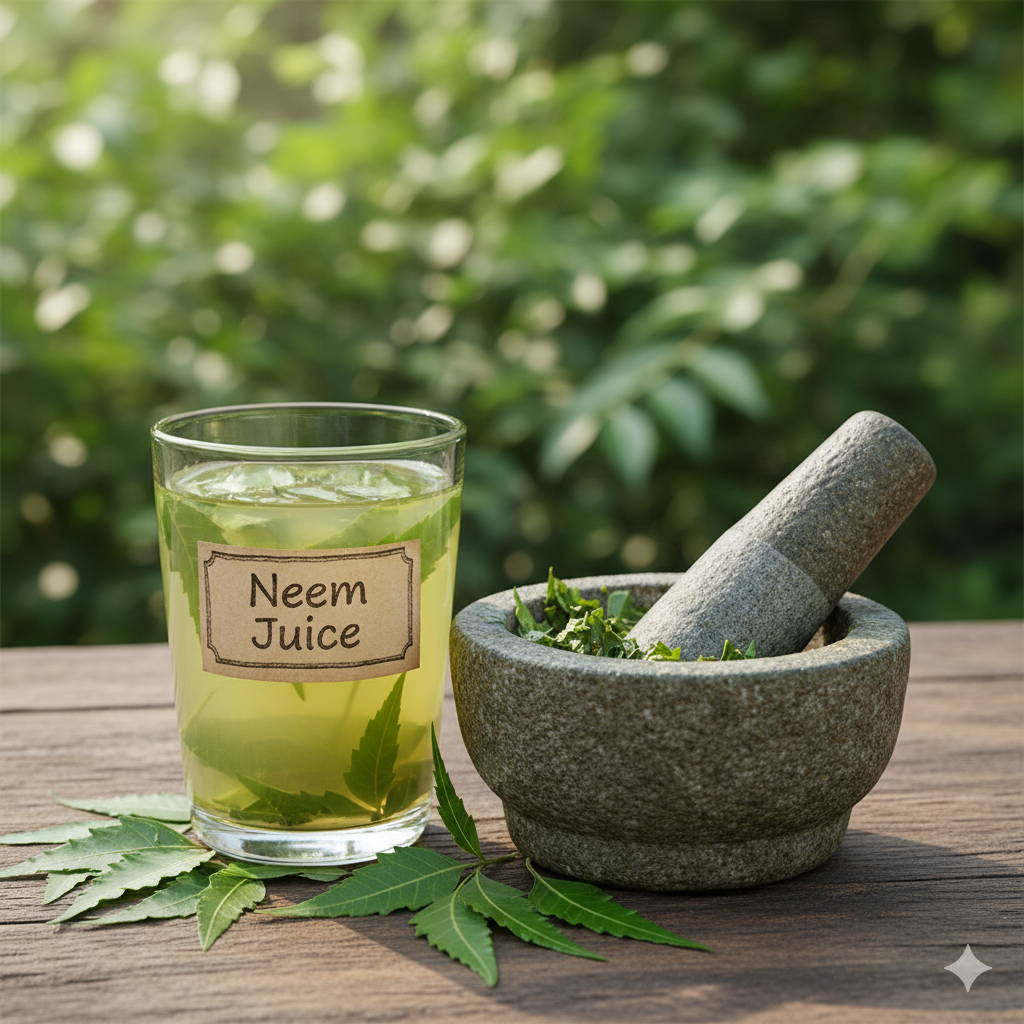Neem Juice: Uses, Benefits, Side Effects, and More!
-
amrit1096
- Posted on
- 0 comments

Neem Juice: Benefits, Uses & Precautions
Your complete guide to understanding the nutritional and traditional health aspects of neem juice.
Introduction
Neem juice comes from the leaves of the neem tree (Azadirachta indica), a plant widely found across South Asia. Traditionally valued in Ayurveda and other systems of wellness, neem juice is rich in bioactive compounds called phytochemicals.
Although it’s often consumed for general well-being, neem juice is not a replacement for medical treatment. Always seek professional guidance before use—especially if you have health conditions or take regular medication.
Key Takeaways
- Neem juice contains minerals and powerful plant compounds.
- It has been studied for antibacterial, antifungal and anti-inflammatory potential.
- Clinical evidence in humans is still limited; use it cautiously.
Nutritional Benefits of Neem Juice
Neem leaves provide small amounts of calcium, phosphorus, and various phytochemicals including:
- Quercetin
- Beta-Sitosterol
- Nimbin, Nimbanene, Nimbolide
- 6-Desacetylnimbinene, N-Hexacosanol
- Amino acids and other bioactive compounds
Properties of Neem Juice
- Antibacterial & antifungal potential
- May help reduce inflammation
- Could aid in managing stomach ulcers
- Antioxidant and possible liver-supportive activity
Potential Uses of Neem Juice
1. Wound-Healing Support
Animal studies suggest neem extracts may aid wound healing. Neem juice could offer similar benefits but should not replace standard wound care.
2. Support for Blood Sugar Levels
Some evidence suggests neem may support glucose metabolism. However, it should never replace prescribed diabetic medications.
3. Liver Health
Research on animals shows neem might help maintain healthy liver enzymes, but clinical confirmation is required.
4. Infections & Immunity
Neem’s antibacterial and antifungal activity is well documented in labs, yet medical treatment remains essential for serious infections.
5. Anti-Inflammatory & Antioxidant Potential
Its antioxidant activity may help neutralise free radicals and support overall wellness.
How to Use Neem Juice
Wash fresh neem leaves, grind into a paste, and dilute with clean water to prepare juice. Due to its bitter taste, many mix it with other ingredients. Externally, neem juice is sometimes applied to the scalp to reduce dandruff because of its antifungal nature.
Side Effects
Neem juice should be used in moderation. Overconsumption or unsupervised long-term use may lead to adverse effects. Safety data for children, pregnant or breastfeeding women is insufficient.
Precautions
- Pregnant & Breastfeeding Women: Avoid use unless approved by a healthcare provider.
- Children & Elderly: Best avoided unless specifically recommended.
Interactions with Other Drugs
Neem juice may interact with certain medications. Always inform your healthcare provider about any herbal products you use alongside prescribed treatments.
Conclusion
Neem juice is rich in plant compounds traditionally linked to various wellness benefits. While lab studies support its antibacterial, antifungal and liver-supportive properties, clinical evidence is limited. Consume it cautiously and never as a substitute for professional care.
FAQs
Q1: Is neem juice safe for daily use?
Moderate use may be fine for healthy adults, but long-term safety isn’t well studied.
Q2: Can it replace prescribed medicines?
No. Neem juice is a supplement, not a replacement for treatment.
Q3: Does it help skin health?
Its antimicrobial nature may support skin health, but research is ongoing.
References
- Studies on neem leaf phytochemicals and their bioactivity
- Research on neem’s antibacterial, antifungal, antioxidant effects
- Traditional applications in Ayurvedic wellness


























